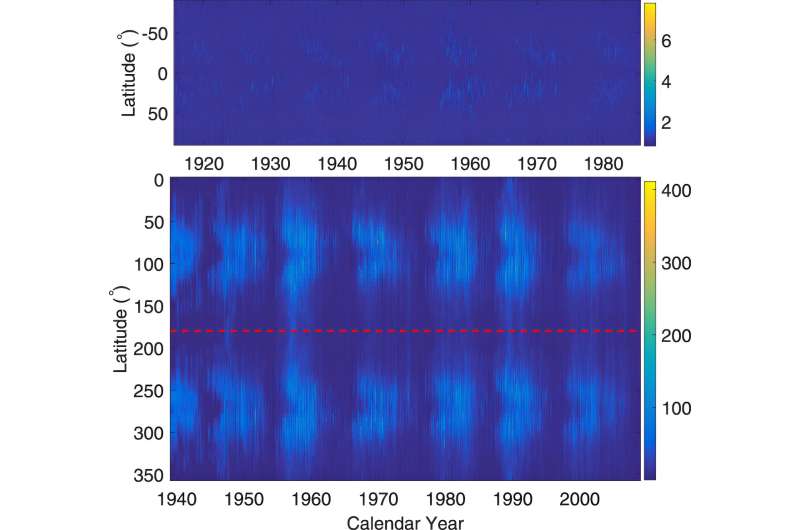This article has been reviewed according to Science X's editorial process and policies. Editors have highlighted the following attributes while ensuring the content's credibility:
fact-checked
peer-reviewed publication
trusted source
proofread
Researchers reveal anomalous heating in the sun's upper atmosphere

In a study published in The Astrophysical Journal, researchers from the Yunnan Observatories of the Chinese Academy of Sciences depicted a complete physical image of the anomalous heating in the upper atmosphere of the sun (the solar corona and the solar chromosphere).
The enigma of the corona's anomalous heating stands as one of the eight challenges in modern astronomy. Similarly, the anomalous heating of the chromosphere continues to baffle solar physicists.
Observations gleaned from large telescopes and satellites have revealed potential magnetic activities that could be the cause of this heating. Theoretical research has proposed various heating modes, yet none have been definitively proven to be the cause. As it stands, our understanding of how the sun's upper atmosphere is heated remains incomplete.
This study charts a new course, departing from the traditional cause-to-effect approach. Instead, it starts from the effect and traces its way back to the cause. The journey begins with an examination of the upper atmosphere's characteristics, followed by the identification of correlations with various magnetic fields, the only known source capable of supplying the energy needed for heating the upper atmosphere.
The study considers the entire upper atmosphere as a whole system that has been experiencing abnormal heating and maintaining abnormally high temperatures for a long time. Consequently, the most suitable and necessary research method involves analyzing long-term observations of the full-disk chromosphere and corona.
After long-term observations of the global chromosphere in the Ca II K line and the global corona in the coronal green line, this study, for the first time, provides a clear answer to the question of how the upper atmosphere is abnormally heated.
The researchers revealed that the quiet chromosphere's main heat source is the network magnetic fields, and the magnetic configuration of their canopy structures greatly prevents charged particles, thermal energy, and some waves from escaping from the top of the chromosphere.
They also revealed that the butterfly-shaped active chromosphere draws its heat from the magnetic fields in active regions and ephemeral regions, as well as from the downward propagation of energy generated by them in the corona.
Notably, the magnetic fields in ephemeral regions contribute significantly more to the heating of the active chromosphere than those in active regions. The heating of the quiet chromosphere forms the main component of the entire chromosphere's heating.
The researchers also revealed that the quiet corona is mainly heated by the network fields. Here too, the magnetic fields in ephemeral regions contribute significantly more to the heating of the active corona than those in active regions. The active corona receives more heat than the quiet corona.
In addition, the researchers showed that the heating of the magnetic fields in active regions and ephemeral regions results in a butterfly-shaped spatial distribution of the active chromosphere and the active corona. This heating process exhibits a long-term evolution characteristic that is in phase with the solar activity cycle.
Conversely, the heating of the network fields leads to a long-term evolution of the entire background (quiet) chromosphere and the background (quiet) corona, which is opposite to the solar cycle.
More information: K. J. Li et al, How Are the Abnormally Hot Chromosphere and Corona Heated by the Solar Magnetic Fields?, The Astrophysical Journal (2024). DOI: 10.3847/1538-4357/ad1ab3
Journal information: Astrophysical Journal
Provided by Chinese Academy of Sciences




















